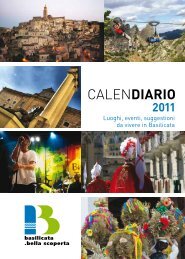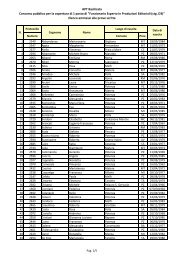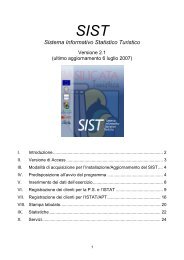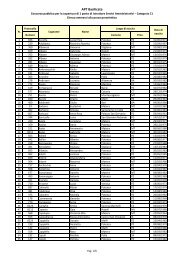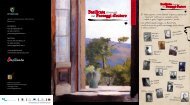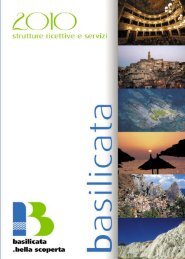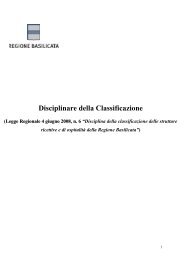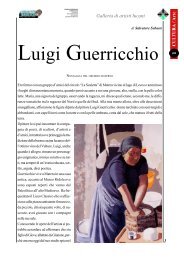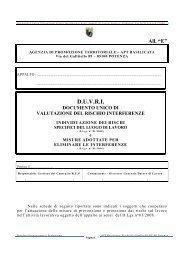Archeonaut - APT Basilicata
Archeonaut - APT Basilicata
Archeonaut - APT Basilicata
- No tags were found...
You also want an ePaper? Increase the reach of your titles
YUMPU automatically turns print PDFs into web optimized ePapers that Google loves.
uro LucanoMODEL FARMSAS ROME DECLINEDThere was a time when <strong>Basilicata</strong>enjoyed a golden era, while all aroundit an empire was collapsing. We are inthe 4th–5th century AD, and Rome waslosing its dominion over the world. Atthe same time, however, the economywas flourishing in the territories of<strong>Basilicata</strong>, with integrated exchangeand production in which ruralbasedagricultural activity combinedperfectly with craftwork that wasoften of excellent quality. This was thepolitical and social setting that enabledthe Roman villas of the late empire toDisplay case detailbecome true experimental farms withinthe confines of the Augustan 3rd region(Augustus had redrawn the politicalgeography of the south of Italy in the 1stcentury BC, dividing the territory intoregions, of which the third includedLucania and Bruttium, present-dayCalabria). These were self-sufficientand managed to create an economicsurplus that generated considerablerelated activities and a network ofexchange that was never seen again.The presentation of the Roman villas ofnorthern Lucania and their economy isthe most fascinating part of the exhibitsin the National Archaeological Museumin Muro Lucano. There are four villasthe most beautiful woman wished to aspireto hard work, busying herself to makeher man’s activities greater and betterthrough her care.(Columella)in particular: that of Moltone di Tolve,the oldest of the four (already built andinhabited since the 4th century BC)that of San Pietro, and then the villas ofOppido Lucano, in the location of SanGilio, and Masseria Cicciotti. The latterthree, built in the last republican periodof Rome (i.e. the end of the 1st centuryBC), were organised as real agriculturalfactories, capable of providing work forhundreds of people, many of whomlived there. Some workers, labourersand specialised craftsmen in particular,were employed seasonally. The villaswere all located along the course ofthe sheep trail that became known asDisplay case detail“Tratturo Regio” (Royal Trail) during theBourbon era, and therefore strategicallylocated close to the main transit routes.Each of four villas had a “pars rustica”,a warehouse for materials, livestockand supplies, and a “pars urbana”,which served as the owner’s residenceand for reception and dining activities.The villas’ main activities were cerealcultivation, as seen by the stores of grainthat were discovered, sheep and goatraising, and milk and wool processing.They also had craftsmen’s workshopsthat were capable of producing refineditems, which were exported, thanks tothe overland and river communicationroutes (the Bradano was navigable and56



